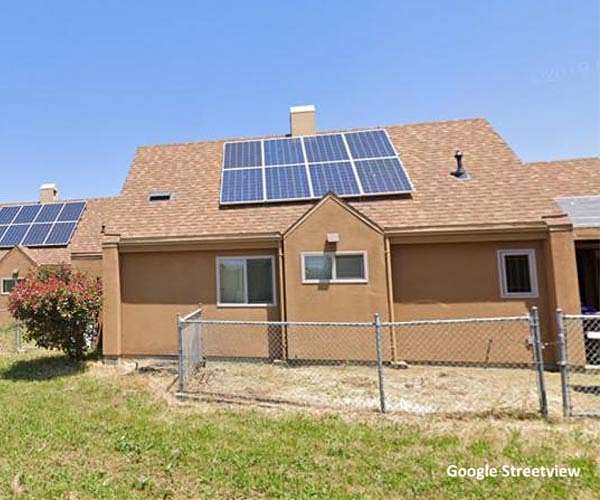Today at the CPUC: Legislative lifeline for taxpayers as AB 1999 changes utility tax
In a swift response to public outcry and mounting pressure, California lawmakers took decisive action to amend Assembly Bill 1999 (AB 1999) aimed at limiting the controversial Big Utility Tax. This legislative effort follows on the heels of the California Public Utilities Commission’s (CPUC) decision to impose a $24/month utility tax beginning in 2026, which would impact approximately four million households across the state, including many users of solar energy.
Yesterday, the CPUC approved the nation’s second-largest utility tax, which will significantly increase household energy bills. This decision has catalyzed urgent legislative efforts to ease the financial burden on Californians, especially renters, seniors and those who use renewable energy sources such as solar.
Legislative response and AB 1999
Thanks to widespread public and industry advocacy, AB 1999 was quickly revived and amended by Assembly Speaker Robert Rivas. The amended bill, which now includes a $24 utility tax cap and strictly ties future increases to the rate of inflation, offers a pragmatic approach to a potential financial escalation. In particular, the bill proposes a sunset clause for the tax in 2028, providing a clear end date for the levies imposed.
The revival of AB 1999 is a testament to the effectiveness of collective voice and action. Public response, including a significant protest outside the CPUC meeting, has been a crucial factor in the rapid legislative developments. MP Jacqui Irwin, author of AB 1999, has played a crucial role in keeping the bill active and pushing for amendments that better reflect the public interest.
The issue has received extensive media attention, with major outlets such as the LA Times and San Francisco Chronicle highlighting the implications of the new utility tax. This reporting has played a crucial role in informing the public and amplifying calls for legislative action.
The legislative process for AB 1999 is far from over. The bill faces several hurdles before it can pass the Legislature and be signed by the governor. To support this effort, a Zoom Webinar is scheduled for May 16, where details of the AB 1999 amendments will be discussed and strategies to advocate for their implementation will be shared.
The CPUC’s decision and subsequent legislative actions highlight the ongoing debate over energy policy in California, particularly the balance between funding utility infrastructure and promoting renewable energy adoption. As the state makes progress toward its clean energy goals, the results of these legislative efforts will significantly impact the economic landscape for millions of Californians.
More on the CPUC: A new era for solar energy with resolution E-5260
In a significant step aimed at strengthening California’s clean energy goals, the California Public Utilities Commission (CPUC) has approved a series of advisory letters from the state’s major utilities: Pacific Gas and Electric (PG and E), San Diego Gas and Electric. SDG&E) and Southern California Edison (SCE). These advisory letters introduce pilot proposals for operational flexibility, marking a critical step toward increasing grid reliability and integrating renewable resources.
This approval, codified in Resolution E-5260, comes at a crucial time as California aggressively pushes to meet its ambitious renewable energy goals. The approved pilots by PG&E, SDG&E and SCE are intended to test innovative approaches to power grid management that could have a significant impact on how solar energy is integrated into the system.
The Operational Flexibility Pilots are intended to test new energy management methods that can better adapt the electricity grid to the fluctuations inherent in renewable energy sources, such as solar and wind energy. By improving the way the electric grid handles these fluctuations, California can better utilize its substantial solar energy resources, reduce dependence on fossil fuels, and make progress toward its clean energy future.
This development is especially important given the context of California’s energy landscape. With the state committed to achieving 100% clean energy by 2045, initiatives like these are critical. They not only support the operational integrity of the electricity grid, but also ensure that the integration of renewable energy is both sustainable and efficient.
The CPUC’s decision to approve these pilots followed extensive reviews and input from various stakeholders, reflecting a collaborative approach to addressing California’s energy challenges. Looking ahead, the results of these pilots will provide valuable insights that could lead to broader reforms in the way energy is managed across the state, setting a precedent for other regions to follow.
Today on the CPUC there is a special series with the latest updates from the California Public Utilities Commission. Focusing on developments impacting the solar industry and broader renewable energy initiatives, this series aims to keep readers informed about the changing dynamics of energy policy in California.
Bradley Bartz, founder of ABC Solar Incorporated and advocate with the CPUC, continues to play a critical role in navigating and interpreting the implications of utility regulations for the solar industry and its consumers.
For more detailed discussions and updates, follow the series and participate in upcoming webinars The solar Bible GPT by Bradley Bartz.


